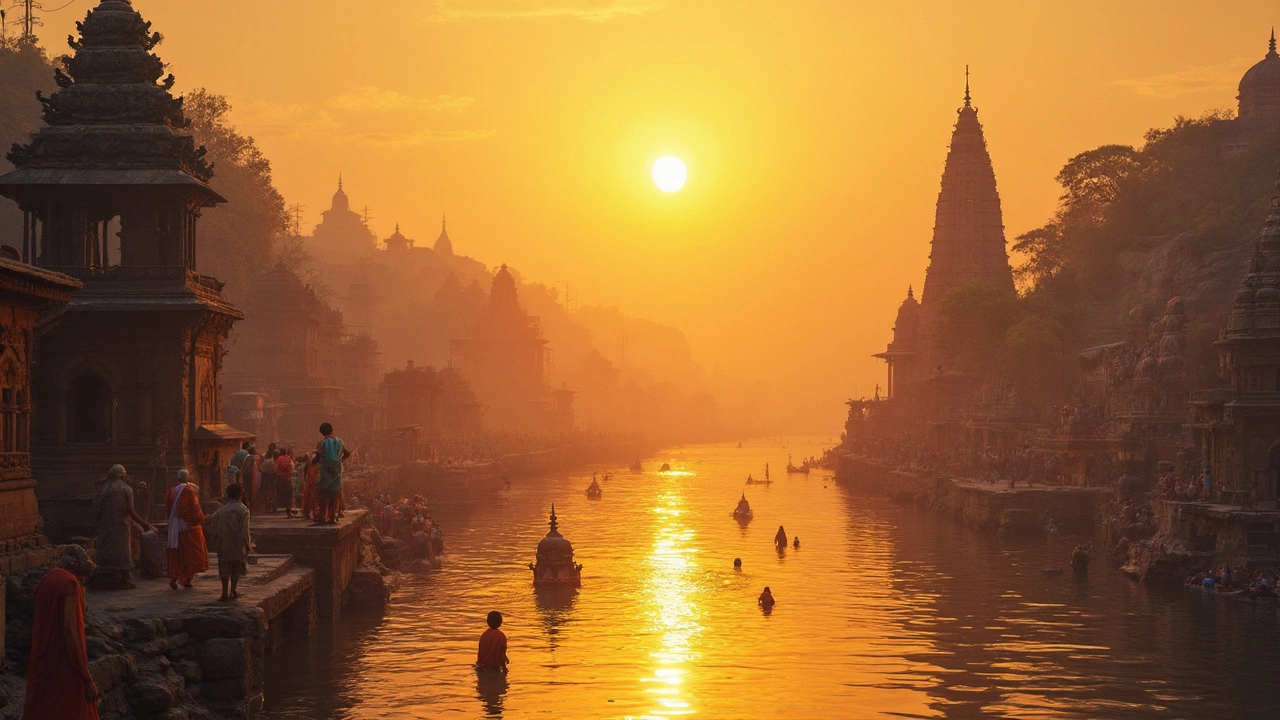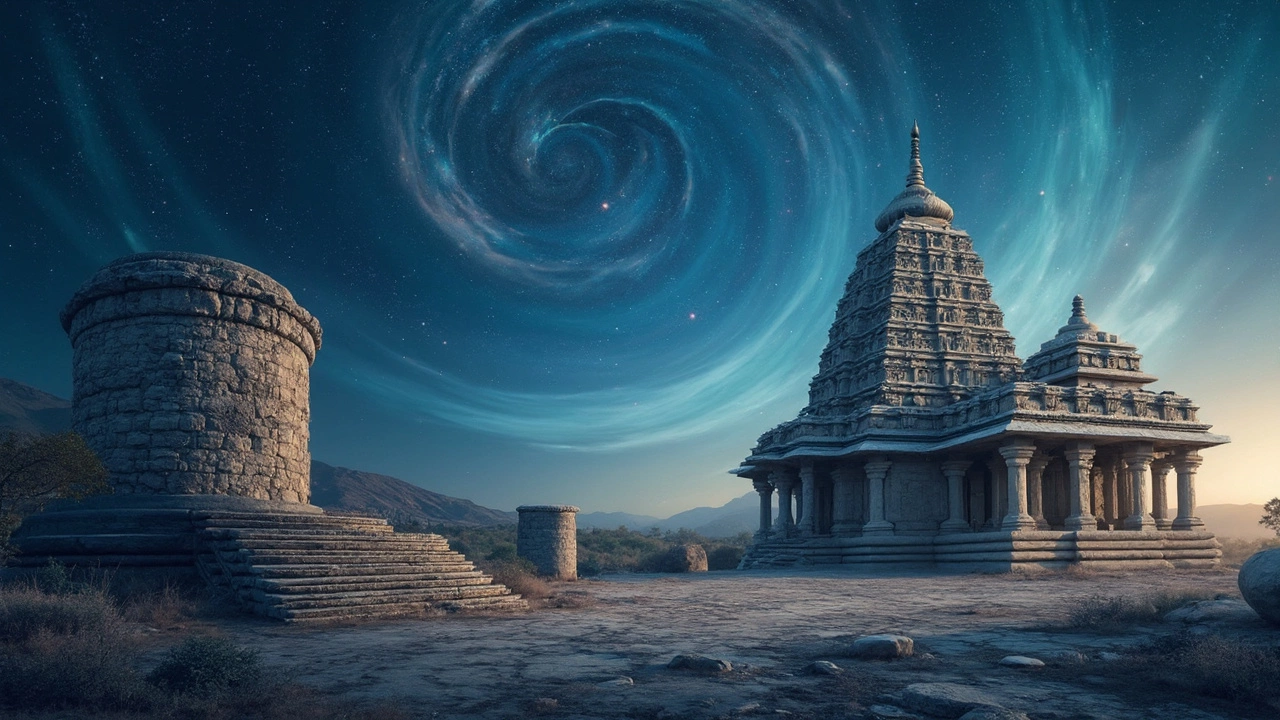Exploring India's Ancient Temples: What's the Oldest Temple in the World?
 Mar, 21 2025
Mar, 21 2025
Did you know the oldest known temple in the world isn't even in India? It's Gobekli Tepe, sitting proudly in Turkey, and it's over 11,000 years old! These mysterious stones are believed to predate Stonehenge by thousands of years. But if we hop over to India, the land of spirituality and diverse cultures, temples have a glorious history of their own that spans centuries.
India is home to some of the oldest temples that not only serve as places of worship but stand as architectural wonders showcasing our illustrious past. The Kailasa Temple in Ellora, built from a single rock, or the beautiful Sun Temple in Konark, each has its unique story to tell. These structures are a testament to India's incredible craftsmanship and devotion.
For those looking to dive into the temple tours in India, understanding the oldest global temple provides a fascinating perspective. But knowing where to start in India can be daunting—there's so much to see! How do you pick which temples to visit? We'll guide you through the best stops and share practical tips to make your journey smooth and fulfilling.
- Unveiling Gobekli Tepe
- Comparing Ancient Indian Temples
- Essential Temple Touring Tips
- Spiritual Significance and Experience
Unveiling Gobekli Tepe
So, what's so special about Gobekli Tepe that has archaeologists and historians buzzing? Located in southeastern Turkey, Gobekli Tepe is considered the oldest known temple in the world, taking us way back to around 9600 BC! Yes, that's seriously old.
This ancient site changes everything we thought we knew about prehistoric humans. Gobekli Tepe wasn't built by settled societies but by hunter-gatherers. It’s pretty wild to think about how they managed to erect these massive stone pillars without modern tools.
The Structure of Gobekli Tepe
The site consists of about 20 circular enclosures, though not all of them have been excavated. Each enclosure is made up of T-shaped stone pillars adorned with intricate carvings depicting animals like foxes, scorpions, and vultures. These carvings aren't just doodles; they tell stories and possibly offer insight into the spiritual symbols of the time.
Imagine standing there, surrounded by these towering stones, wondering what rituals and gatherings took place thousands of years ago. It's the kind of site that sparks curiosity and imagination.
Why Is Gobekli Tepe Important?
Gobekli Tepe is a game-changer because it suggests that religious or spiritual gatherings might have led to forming settled communities and agriculture, not the other way around. It's like flipping the script on what we assumed about the dawn of civilization!
In addition, it offers a glimpse into early humans’ cognitive and cultural evolution, showing that our ancestors had complex social structures long before the wheel was even invented.
| Gobekli Tepe Facts | Details |
|---|---|
| Age | Around 11,000 years old |
| Location | Southeastern Turkey |
| Number of Enclosures | Approximately 20, not all excavated |
If you're planning temple tours in India and want to add a notable detour to your travel list, Gobekli Tepe is a bucket-list-level site for anyone fascinated by ancient wonders. Mark this spot on your map, because there’s nothing else like it!
Comparing Ancient Indian Temples
When it comes to ancient temples, India holds a treasure trove of architectural marvels. One standout is the Kailasa Temple at Ellora. Carved in the 8th century, it's a real rock-cut beauty, made from a single monolithic rock. Imagine the sheer effort and precision needed to create such an intricate structure.
Then there's the Sun Temple in Konark, Orissa, dating back to the 13th century. This temple, shaped like a giant chariot, is dedicated to the Sun God. What's cool is that the temple's placement allows the first rays of the sun to illuminate the main entrance, showcasing the impressive engineering skills of ancient India.
Not to be forgotten is the Virupaksha Temple in Hampi. With origins that stretch back to the 7th century, it holds a timeless charm. The stunning gopuram (tower) and columns adorned with intricate carvings are a testament to brilliant craftsmanship.
The Allure of Diversity
Each of these temples represents different eras, styles, and dynasties, reflecting India's diverse history. Whether it's the Dravidian architecture of the south or the Nagara style of the north, each temple carries stories of its time, its people, and their devotion.
Fun Trivia
Here's a little-known fact: the Brihadeeswarar Temple in Tamil Nadu is also known as the 'Big Temple' and was constructed by King Raja Raja Chola I. Its tower is so intricately designed that its shadow doesn’t fall on the ground at noon!
When embarking on temple tours in India, understanding these nuances can deepen your appreciation and spark conversations with locals. Whether you're snapping pictures or soaking in the stories, these ancient structures offer a window into the past, while still being a living part of the present.

Essential Temple Touring Tips
Visiting temples, especially in India, can be a transformative experience. But to get the most out of your visit, a bit of planning goes a long way. Whether you're chasing architecture or spiritual fulfillment, these tips will help keep your journey memorable and smooth.
Dress Appropriately
Many temples require modest clothing. Covering shoulders and legs is often a must, and some places insist on removing shoes. Bring a scarf or shawl with you, just in case you need to cover up a bit more.
Respect Local Customs
Each temple might have its own customs. Whether it’s the way you enter the temple or how you interact with the deities, observing locals can give you clues. A wise traveler once said,
"When in Rome, do as the Romans do." Follow this advice to blend in and respect cultural sentiments.
Best Time to Visit
The cooler months from October to March are generally the best for temple tours in India. Not only is the weather more convenient, but many temples host special festivals during this time, offering a richer experience.
Plan Your Route
Given the size of India and the number of ancient temples to see, having a rough itinerary will save you time and energy. Group your visits by region and try to cover temples in one area before moving to the next. This approach makes logistics simpler.
Staying Safe
Busy temple towns can get overwhelming. Keep a close eye on your belongings, and make sure you know the emergency numbers in case you need help.
Local Guides: Yay or Nay?
A knowledgeable guide can bring history alive with stories that you might miss out on otherwise. If history or details interest you, hiring a guide is a good idea. On the other hand, if solitude and inner contemplation are your aims, wander by yourself.
Here's an interesting fact: A study showed that travel guides enhanced visitors' understanding of intricate temple carvings by up to 40%. Knowing the tales behind these sculptures can enrich your visit immensely.
- Dress codes can vary, it's worth researching in advance.
- Photography restrictions are common, always ask before snapping pictures.
- Hydrate! You might be walking a lot.
By following these tips, your temple tours in India will be packed with amazing memories and experiences. Happy touring!
Spiritual Significance and Experience
Visiting India's ancient temples isn't just about marveling at awe-inspiring structures—you’re stepping into a realm of spirituality steeped in history. Here, the air is thick with stories and beliefs that have been cherished for millennia. Have you ever wondered what drives millions of pilgrims to these sacred sites?
Deep Connection with the Divine
Indian temples are more than mere buildings; they're gateways to the divine. The elaborate rituals, chants, and sheer devotion present make for a profound spiritual experience. Whether you're at the bustling Meenakshi Temple in Tamil Nadu or the quiet Kedarnath in the Himalayas, each spot offers a unique spiritual vibe, inviting visitors to connect deeply with their sense of self and faith.
Cultural and Historical Insights
These sites are not just places of worship but living reflections of India's age-old traditions. Every carving on a temple wall narrates stories from mythology, while the architecture itself is often a representation of spiritual beliefs. Walk through the halls of these great temples, and it's like stepping back in time, feeling the pulse of history beneath your feet.
Practical Tips for Spiritual Seekers
- Engage with Local Guides: They often share intriguing legends and tales associated with each temple. This understanding enriches your experience and offers context for the rituals you'll observe.
- Participate in Rituals: Don’t just watch—take part in the daily routines. Light a lamp, offer flowers, or join in singing hymns to feel fully engaged.
- Visit During Festivals: This is when the spirit of the temple comes alive, with grand processions and elaborate ceremonies.
If you're also interested in world history, compare these with the likes of Gobekli Tepe. Our temples offer a different kind of wisdom and insight, blending architecture with spirituality.